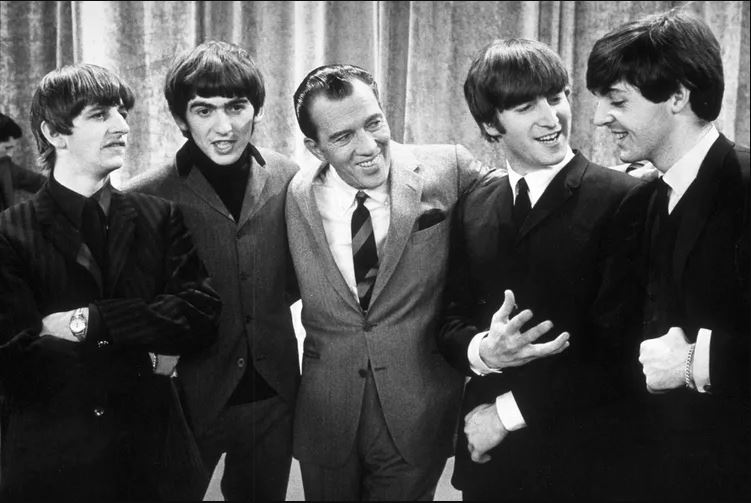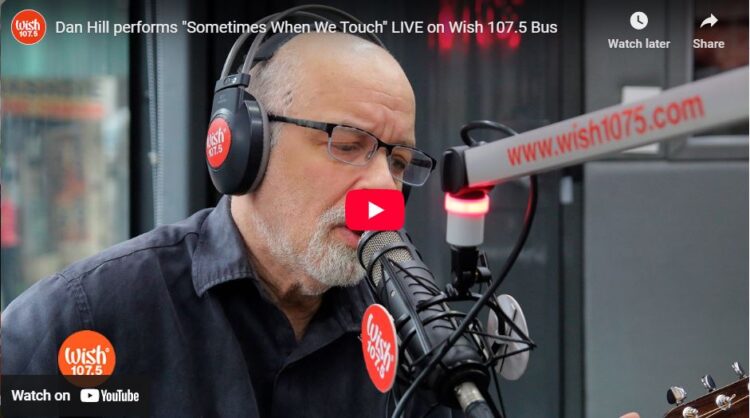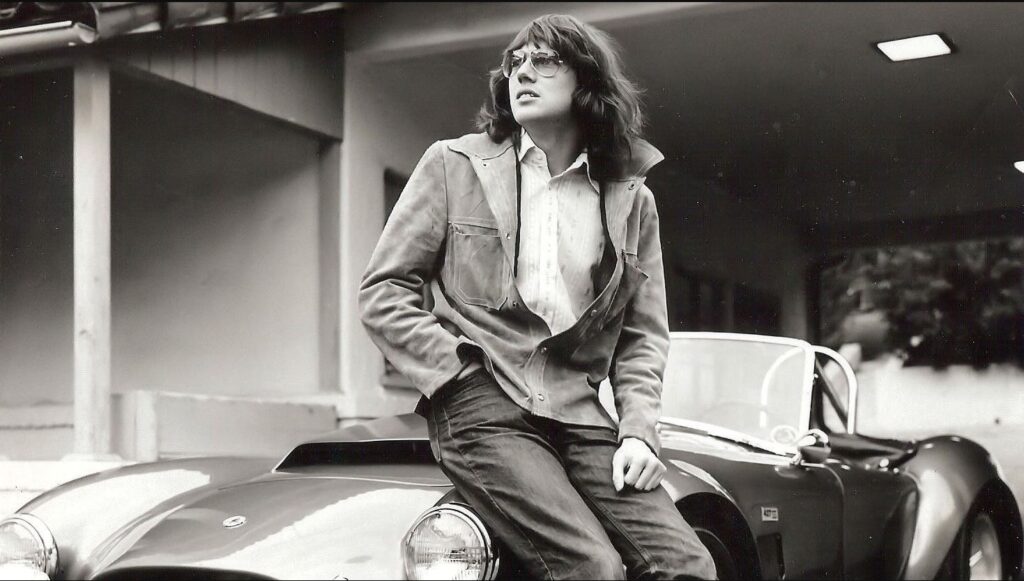From growing up the son of a tireless supermarket chain store manager in Long Island, New York, to his first successes as a singer-songwriter and producer in Toronto – and later, Los Angeles and Nashville – what a 50-plus-year journey it’s been for record man Fred Mollin.
The 72-year-old recently published his memoir: Unplugged: Stories and Secrets from a Life Making Records, Scoring Film and Working with the Legends of Music. We caught up with the SOCAN lifer and Grammy nominee to talk about the book, some of the legends he’s worked with, and a few life lessons gleaned along the way.
Mollin’s life in music has been full of ups and downs, zigs and zags. From producing chart-topping songs, to scoring and arranging music for film and television, to working as a producer, the one constant – which he credits for his success and longevity – is always staying open to new opportunities, even when they feel uncomfortable.
“A lot of my career has been predicated on me saying, ‘Sure, I’ll try that,’” says Mollin from his Nashville studio. “I might not have had any real experience in that style or area of music, but I always tried it… and I was instinctual enough that I made most things work; it’s rare that I said no.”
The lightning-bolt moment

The Beatles with Ed Sullivan
Like almost anybody who came of age around that time, Feb. 9, 1964 is a date etched in Mollin’s mind; in his case, it’s also a lightning-bolt moment that sets him on his path. “When The Beatles played The Ed Sullivan Show, the world changed,” says Mollin, who’s 11 when it occurs. “I saw The Beatles with their guitars, and how all the girls went crazy. I said right then and there, ‘I want to do that – play my guitar, and make girls scream, for the rest of my life!’”
The screaming girls never materialize, but thanks to a set of ears that listen closely and widely, unbridled passion, and a strong familial work ethic, Mollin ends up making music for the rest of his life. And he’s not done yet; the septuagenarian still composes songs and produces records. “It really has been a journey,” he says. “After I saw The Beatles on TV, I got serious about playing guitar and writing songs. My [older] brother [Larry] also started to get creative… and we started writing songs together.”
At 16, with his mom’s blessing, Mollin drops out of school to focus on music. He plays around town in local bands, but his goal is to become a singer-songwriter. In 1972, bored with life in small-town Long Island, at the invitation of brother Larry, who’d decamped to Toronto, Mollin also moves there. He discovers a vibrant music scene, from the rock ’n’ roll, blues, and R&B clubs along the Yonge Street strip to the coffeehouses in Yorkville. He falls in love with Canada.
In between solo gigs at coffeehouses, and performances with Larry in a four-piece improv comedy troupe, Homemade Theatre, Mollin listens to records, and experiments with production techniques on a four-track tape machine. In his book, Mollin describes it as a time when he’s “cutting the candle in half and burning both ends of each half.” The landed immigrant befriends Dan Hill, as the duo are often paired on the same bill. They quickly discover a shared love of listening to and discussing records.
The road to a global hit

Select the image to access the YouTube video of the Dan Hill song “Sometimes When We Touch,” co-produced by Fred Mollin
In 1974, two years after Mollin’s move to Toronto, Hill – who’s signed to RCA Records – is looking to make a demo, and is focused on breaking into the U.S. He invites Mollin to produce it, in tandem with Hill’s high-school mate Matthew McCauley, whose parents helped finance Hill’s first two LPs in in 1975 and 1976. Both albums go Gold in Canada (at the time, selling 50,000 copies). Thanks to American airplay, and gigs at prestigious venues like The Troubadour in L.A. and The Bitter End in New York City, the U.S. comes calling.
The American label wants a chart-topping U.S. lead single for Hill’s third album. So, in late 1976, midway through working on that record, U.S. publisher ATV Music pairs Hill with U.S. hitmaker Barry Mann (“We’ve Got to Get Out of This Place,” “You’ve Lost That Loving Feeling,” “On Broadway”). The two never mesh as co-writers, but Hill leaves Mann a bare-bones song-poem about unrequited love that he’d written years before, called “Sometimes When we Touch.”
A few weeks after returning from L.A., a package from Mann arrives in Hill’s mail, with a demo of “Sometimes When We Touch” he’d recorded on a cheap cassette player, altering the melody of the song sketch. “After we heard it, we all looked at each other and said, ‘This could be a hit!,’” says Mollin. Their intuition is right. They record and mix Mann’s re-worked version at Toronto’s Manta Sound, with McCauley arranging the strings.
“Sometimes When we Touch” hits No. 1 in Canada and South Africa, and is a global smash that resonates with audiences across Europe and throughout Asia. In 1978, the single climbs all the way to No. 3 on the U.S. Billboard Hot 100. With 37 million YouTube views and more than 100 million downloads to date, and Gold certification in the U.S. (for sales of more than 1 million), the pop classic is now one of Top 100 Most Played Songs of All Time. It’s also been covered by everyone from Rod Stewart to Kenny Rogers to Barry Manilow to Dolly Parton.
How does Mollin follow it up? Fueled with confidence, he packs his things and drives West with his fiancé to L.A., in search of even bigger dreams.
Left turns and lullabies

Select the image to access the YouTube video of the Disney Lullaby song “Baby Mine,” co-produced by Fred Mollin
As Mollin likes to say, “my career has taken a lot of left turns.” One of those unexpected swerves occurs in 1985, and it proves both stable and financially rewarding, and especially welcome as he raises a family: the songwriter falls into scoring work for television and film. This “left turn” lasts for the next 15 years, until 2001, when he moves to Nashville to pursue his true love, record production. Mollin’s scoring work earns him four SOCAN TV and film awards. A few of his credits include Beverly Hills 90210, Forever Knight, and the Friday the 13th sequels and TV franchise.
After moving to Nashville, Mollin receives a phone call one day from his “patron saint” Jay Landers, who’s working in A&R for Walt Disney Records. Landers wants to record an instrumental lullaby record of Disney songs, with meditative arrangements to help send babies to dreamland, and believes Mollin is the guy for the job. At first, the songwriter is skeptical. As he jokes to Landers, “You do know that in the TV and film world I’m known as the horror guy!” But his friend isn’t bothered by that.
The inaugural Disney lullaby album, released in 1999, goes Gold. “It’s now heading towards Platinum, and the streams on all those lullaby albums – I did seven of them for Disney – are incredibly high,” says Mollin. “Those records have been such a blessing for me. But they’ve also done a lot of good for others, as generations of young children have been put to sleep with my music.”
Working with legends

Jimmy Webb
Jimmy Webb, Kris Kristofferson, Johnny Mathis, Billy Joel, B.B. King, Gloria Estefan, Billy Ray Cyrus… the list of the legends with whom Mollin has worked is endless. Of all these artists, Songwriters Hall of Fame member Jimmy Webb ( “Up, Up and Away,” “By the Time I Get to Phoenix,” “Wichita Lineman”) is one of his favourites. Another highlight is producing an unplugged album with Lamont Dozier of Holland-Dozier-Holland (the songwriting production team behind so many of the early Motown hits).
As Mollin’s memoir makes clear, he takes nothing for granted, and is filled with gratitude for the long and meandering road – chasing songs and chasing music – that shows no signs of ending.
“I’m proud that I’m still making a living making music – mostly in Nashville, but I’ll go anywhere to make a record,” he says. “My life in music has allowed me to work with so many incredible people. I still love it, and I’m still so passionate about it… it’s just a joy every time I walk into a studio.”